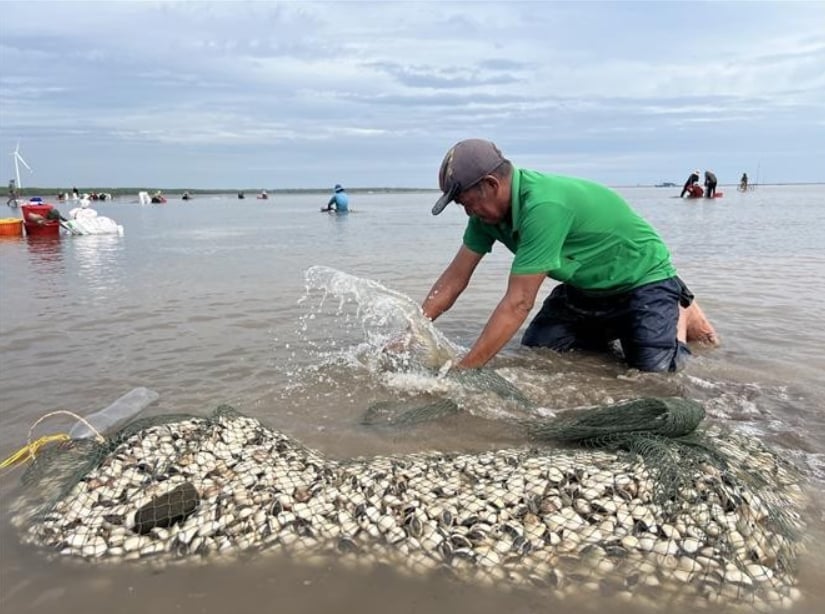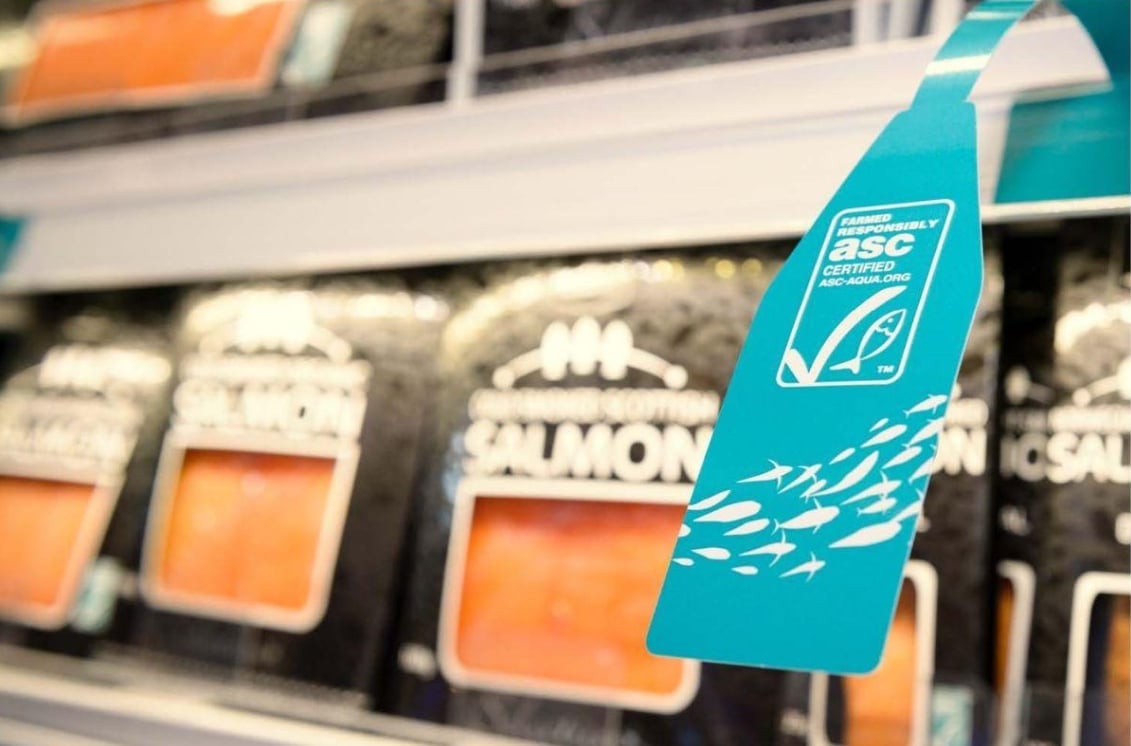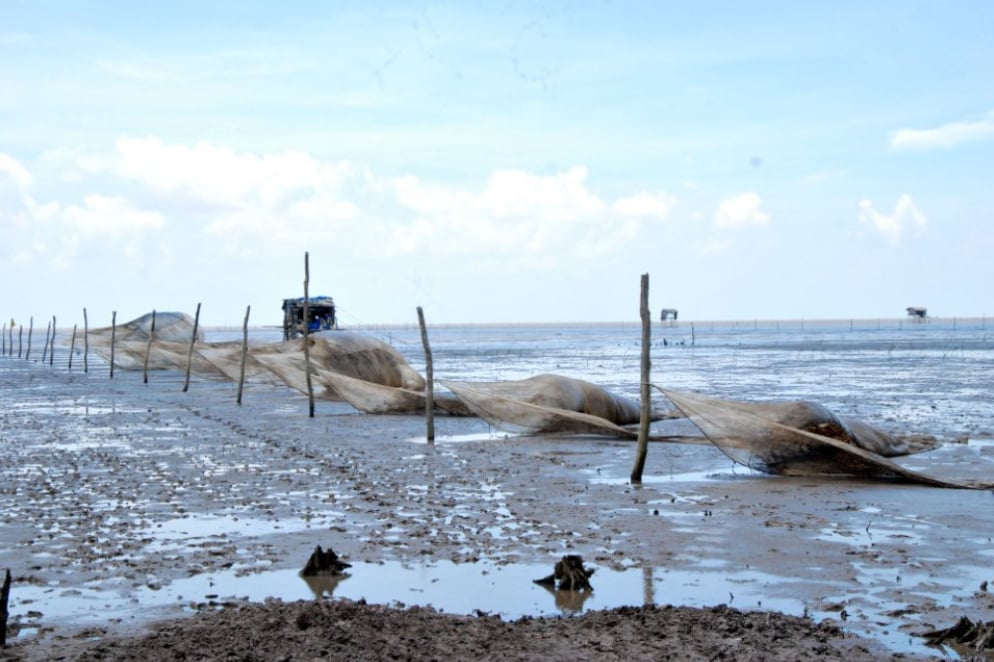October 30, 2025 | 05:09 GMT +7
October 30, 2025 | 05:09 GMT +7
Hotline: 0913.378.918
October 30, 2025 | 05:09 GMT +7
Hotline: 0913.378.918
Vietnam has long possessed significant potential for the development and export of mollusks such as clams, scallops, oysters, snails, squid, and octopus.
However, despite favorable natural conditions and abundant output, the country’s mollusk sector remains largely small-scale and fragmented, lacking coordination and falling short of international standards.
As the global market increasingly prioritizes seafood products with transparent origins, safety, and sustainability, the establishment of internationally certified mollusk farming areas has become an urgent requirement. This is essential not only to enhance export value but also to solidify Vietnam’s position on the global seafood map.

Vietnam has long possessed significant potential for the development and export of mollusks such as clams, scallops, oysters, snails, squid, and octopus. Illustrative image.
According to the Directorate of Fisheries, internationally certified farming areas are not merely symbolic endorsements, they represent a rigorous system of criteria related to food safety, environmental protection, and social responsibility.
Certifications such as ASC (Aquaculture Stewardship Council), BAP (Best Aquaculture Practices), and MSC (Marine Stewardship Council) serve as essential “passports” that allow seafood products to access high-end markets like the EU, the U.S., and Japan.
Take Japan as an example: this market imports approximately USD 300 million worth of bivalve mollusks annually for domestic consumption. Particularly for mollusks - a group of soft-bodied aquatic animals highly sensitive to pollution and reliant on clean water, ensuring safe and sanitary farming areas is a matter of survival.

A standardized production chain ensures full traceability: from broodstock and environmental conditions to the time of harvest. Illustrative image.
When farming areas meet international standards, product quality and safety are strictly controlled—ensuring no antibiotic residues, heavy metals, or microbiological contaminants exceed permissible limits. At the same time, the production chain is standardized to ensure full traceability, from broodstock and environmental conditions to the point of harvest. As a result, products can more easily meet the stringent requirements of premium markets such as the EU, the U.S., and Japan - markets that account for a large share of global mollusk consumption.
However, the current situation reveals a significant gap between potential and actual capacity. According to the Directorate of Fisheries, Vietnam has over 40,000 hectares of coastal water surface dedicated to mollusk farming, concentrated in provinces such as Quang Ninh, Nam Dinh, Thanh Hoa, Khanh Hoa, Ben Tre, Tra Vinh, and Ca Mau. Yet only a few small-scale areas have obtained international certification. The majority of farming zones have yet to be assigned traceability codes in accordance with international standards.
Many areas are facing environmental pollution caused by domestic wastewater and agricultural runoff flowing into the sea, particularly at river mouths.
The issue of broodstock is also a major bottleneck. According to the Fisheries Sub-Department of Ha Tinh province, many farmers still use natural broodstock that have not undergone quarantine, posing risks of disease transmission and negatively impacting product quality.
Moreover, the lack of coordination between farmers and processing enterprises often forces producers to sell their products to middlemen at low and unstable prices. Meanwhile, export value is suppressed due to the absence of strong branding and limited value-added processing.
As a result, although Vietnam ranks among the countries with large mollusk production volumes, the returns are disproportionate, with exports still primarily in the form of raw materials.
To address this challenge, it is essential to start by planning concentrated farming zones and assigning of traceability codes. Local authorities need to select areas with suitable natural conditions such as tidal flats, sheltered bays, and locations less affected by pollution sources. At the same time, investment in farming infrastructure, such as transportation roads, fishing ports, and environmental monitoring systems, is necessary. Only when farming zones have clearly assigned codes can products meet the traceability requirements of major importing markets.

Tidal flats and sheltered bays, which are less affected by pollution sources, are ideal areas for developing internationally certified mollusk farming zones. Illustrative image.
Next is strict control of the environment and water quality. According to VASEP, it is necessary to establish a regular monitoring system for parameters such as salinity, pH, dissolved oxygen (DO), microbial content, and heavy metals. The use of chemicals and antibiotics during farming is strictly prohibited. Instead, integrated ecological farming models, such as combining mollusks, seaweed, and fish, can be applied to naturally purify water, maintain ecological balance, and enhance economic efficiency.
Broodstock quality and farming techniques also need to be standardized. The Good Aquaculture Practices (VietGAP) guidelines recommend using broodstock only from certified quarantine facilities; maintaining detailed farming logs; and applying advanced farming technologies such as suspended cages, substrates, or recirculating systems to increase productivity and control diseases.
Importantly, close collaboration between farmers and processing enterprises is key to ensuring stable output and increasing value. It is necessary to establish product purchase agreements and invest in primary processing and packaging facilities directly in the farming areas to reduce logistics costs. This approach aims to promote the export of value-added products such as ready-to-eat steamed mollusks, canned goods, and seasoned products.
Finally, achieving international certification cannot be done without government support. Policies to subsidize certification costs and organize training for cooperatives and farming groups on evaluation processes and compliance standards are essential. Encouraging the development of collective branding for clean mollusk products will enhance competitiveness and strengthen Vietnam’s position in the international market.
Translated by Phuong Linh

(VAN) According to Crawford School of Public Policy, to achieve the targets set out in Resolution 19, the agriculture sector will require VND 166 trillion in public investment during the 2026-2030 medium-term period.
/2025/10/28/0635-0-175843_475.jpg)
(VAN) After the administrative merger, Da Nang has great potential to develop tourism based on agriculture, particularly organic agriculture associated with indigenous culture, thereby promoting green lifestyles and green consumption.

(VAN) SNE is implementing a pilot project in Viet Nam with 10 key crops such as melon, pineapple, and durian, and plans to expand the application to many other agricultural products.

(VAN) On October 23, Gia Lai hosted the Thailand-Gia Lai Investment Promotion Conference 2025 under the theme 'Discover Gia Lai, Vietnam - Breakthrough in trade and investment.'
/2025/10/23/1837-9-121127_285.jpg)
(VAN) Ho Chi Minh City is building an agricultural innovation ecosystem from research to production, aiming at a green, high-value, sustainable, and climate-resilient agriculture.

(VAN) A combination of practical, preferential policies, streamlined administrative reforms, and integrated infrastructure is transforming Bac Ninh province into an attractive destination for investors, particularly in the high-tech agriculture sector.

(VAN) Leveraging its natural advantages and strong business investment, An Giang’s pangasius industry is expanding its export markets and moving toward a sustainable development model.